I have 50 target classes of 300 datasets.
This is my sample dataset, with 98 features:
import numpy as np
import pandas as pd
import seaborn as sns
import matplotlib.pyplot as plt
%matplotlib inline
dataset = pd.read_csv(root_path + 'pima-indians-diabetes.data.csv', header=None)
X= dataset.iloc[:,0:8]
y= dataset.iloc[:,8]
from sklearn.preprocessing import StandardScaler
sc = StandardScaler()
X = sc.fit_transform(X)
from sklearn.model_selection import train_test_split
X_train, X_test, y_train, y_test = train_test_split(X, y,test_size=0.3)
from keras import Sequential
from keras.layers import Dense
classifier = Sequential()
#First Hidden Layer
classifier.add(Dense(units = 10, activation='relu',kernel_initializer='random_normal', input_dim=8))
#Second Hidden Layer
classifier.add(Dense(units = 10, activation='relu',kernel_initializer='random_normal'))
#Output Layer
classifier.add(Dense(units = 1, activation='sigmoid',kernel_initializer='random_normal'))
#Compiling the neural network
classifier.compile(optimizer ='adam',loss='binary_crossentropy', metrics =['accuracy'])
#Fitting the data to the training dataset
classifier.fit(X_train,y_train, batch_size=2, epochs=10)
I get 19% accuracy here, and I don't know how to optimize my prediction result.
